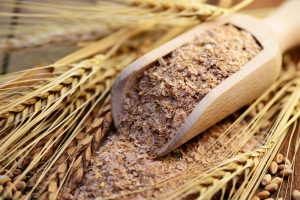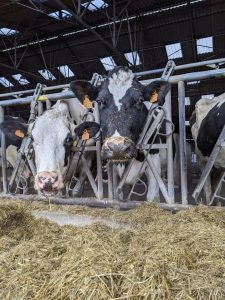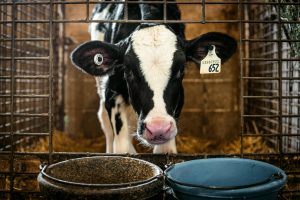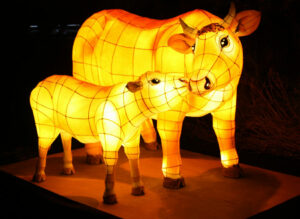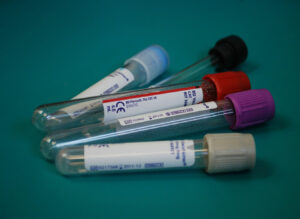Carlos Fernández y Tamara Romero
The Valencian Community is one of the main producers of rice and citrus in Spain. Rice straw (residue from rice paddy fields) is usually eliminated by controlled burning of crops. On the other hand, residues of citrus fruit pruning are also eliminated by burning or shredding in green and subsequent incorporation into the soil. All these practices cause massive emissions of greenhouse gases in the atmosphere.
In order to use the rice straw and the residues of citrus fruit pruning, the Project LIFE16/CCM/ES/000088 has designed LOWCARBON FEED diets for feeding ruminants. Its main goal is to reduce the burning of these horticultural residues and recycle them to livestock production.
The ruminant animal used as a model in these studies were Murciano-Granadina dairy goats in the middle of lactation. The first LOWCARBON FEED diets incorporated rice straw and orange and/or lemon leaf residues into a concentrated feed. That is, these residues were not used as forage sources, but were included as an additional ingredient in the concentrate. In this case, citrus residues and rice straw partially replaced cereal grains. Alfalfa hay was used as the forage source, and the forage concentrate ratio was 40:60. Table shows diet chemical composition.
| Table. Chemical composition of the diets (alfalfa hay plus concentrated feed) | |||
| Chemical composition, % of DM |
Control |
Lemon |
Orange |
| Dry matter (DM) |
93 |
93 |
94 |
| Organic matter |
86 |
83 |
83 |
| Ash |
7 |
10 |
11 |
| Crude Protein |
18 |
18 |
18 |
| Ether Extract |
2 |
4 |
3 |
| Neutral detergent fiber |
42 |
34 |
35 |
| Acid Detergent Fiber |
25 |
21 |
22 |
| Acid Detergent Lignin |
3 |
4 |
4 |
| Non Fibrous Carbohydrates |
31 |
35 |
33 |
| Starch |
18 |
15 |
12 |
| Gross Energy, MJ/kg DM |
17 |
16 |
16 |
The authors compared the LOWCARBON FEED diet with a commercial diet, and in both cases, average daily dry matter (DM) intake was 1.5 kg of the total diet, and 0.5 kg of alfalfa hay.
Feeding the experimental diet reduced methane emissions, probably due to the high content of polyunsaturated fatty acids, essential oils, and tannins in citrus leaves. While goats fed with the commercial ration produced 30 g of methane per day, the LOWCARBON FEED group emitted 27 g of methane (when the orange leaves were fed) and, in those that consumed lemon leaves, daily methane production was 24 g. This reduction of methane emissions represents a decrease of 10% for orange, and 20% for lemon leaf concentrates (see Figure 1).
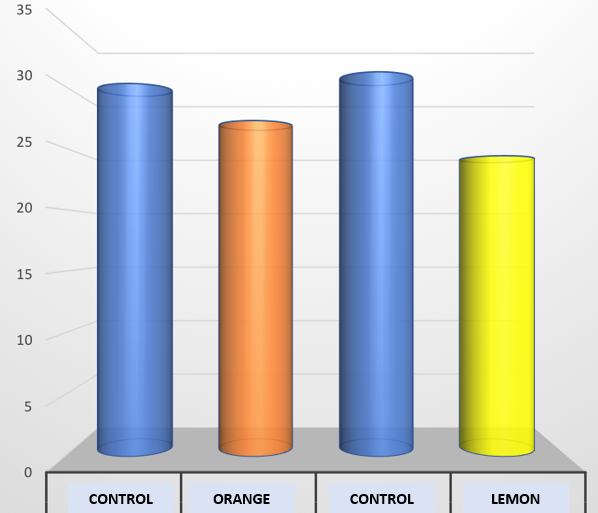
According to data from the LIFE ECOCITRIC and ECORICE projects, 88,011 and 12,000 tons of citrus and rice straw residues, respectively, are produced annually in the Valencian Community (Spain), respectively. On the other hand, CESFAC (2018) has reported 288,359 sheep and goats in the Valencia Community. If 20% of citrus pruning residues and 12% rice straw were added to concentrates and fed to these animals, annual residues generated from leaf citrus fruits and rice straw would be recycled in 2 years and a half year, respectively. In addition, these residues can be fed to dairy and beef cows as well.
Therefore, with the incorporation of citrus pruning residues (orange and lemon leaf) and rice straw in feeds for ruminants, controlled burning can be reduced and recycled towards the production of milk or meat.
About the authors
Carlos Fernández received his PhD in Agricultural Engineering from the Universidad Politécnica de Madrid, (Spain). He spent a post-doctorate stage at University of California, Davis (EEUU), followed by two researcher stages at University of New England, Armidale (Australia) and AgResearch Invermay (New Zealand). He is a Professor in Animal Production at the Animal Science Department from the Universitat Politècnica de Valencia, Valencia, Spain, and his research is mainly focused in animal bioenergetic and quantification of greenhouse gases in ruminants. cjfernandez@dca.upv.es
Tamara Romero obtained her PhD in Science and Technology of Animal Production from the Universitat Politècnica de Valencia, Spain. She had a pre-doctorate stage at Instituut voor landbouw-en visserijonderzoek (ILVO) of Melle (Belgium). She is currently working in different research projects related with milk quality, screening antibiotics in dairy products, and animal bioenergetic and quantification of greenhouse gases in ruminants.
Acknowledgements
Este trabajo forma parte del Proyecto LOW CARBON FEED cuya referencia es LIFE16/CCM/ES/000088.



